DOMAINE DU PÉLICAN JURA
EXCLUSIVE TO CORNEY & BARROW IN THE UK, HONG KONG & SINGAPORE




EXCLUSIVE TO CORNEY & BARROW IN THE UK, HONG KONG & SINGAPORE



Having nested in our Asian offices in 2016, we are delighted that Guillaume d’Angerville’s Domaine du Pélican has spread
its wings to C&B UK.
Guillaume needs little introduction to Corney & Barrow customers, who will know him from the eponymous Domaine Marquis d’Angerville in Volnay. He represents the family’s fifth generation, having returned to Burgundy in 2003 after a career in banking, to take on his late father’s mantle. Guillaume’s partner at Domaine du Pélican is François Duvivier, long-time Régisseur at Marquis d’Angerville.
C&B Singapore and Hong Kong have represented Domaine du Pélican exclusively from the 2015 vintage, when the domaine was just four years old. Seven vintages later, we could not be more excited to introduce these great wines to our customers in the UK, also on an exclusive basis.
Domaine du Pélican is based in the heart of Jura, nestled between Burgundy and the Swiss border. The domaine owns some 15 hectares, in the villages of Arbois and Montigny-lès-Arsures, all under the Arbois appellation. As in Volnay, the estate is certified biodynamic.
The domaine’s plantings comprise both white and red grapes. The whites, which represent the majority, are the native Savagnin (40% of the estate, the star of Jura) and Chardonnay (30%). The reds are Pinot Noir (15%), with the indigenous Trousseau (10%) and Poulsard (5%).
In addition to the 2022s of the main range, this UK launch happily coincides with the first release of the domaine’s Vin Jaune, from the 2016 vintage. As Guillaume said, “We are very excited by this new cuvée, which completes our sous voile series.” (More on sous voile below…)
Jura is a jewel in the world of wine. I have tried to capture some of its nuances in this inaugural brochure, whilst veering away from wine geekiness. These are wines which, first and foremost, are delicious to drink. A couple of the styles are unapologetically different or quirky, but equally, the Chardonnays and Pinot Noirs are easily recognisable to lovers of Burgundy. I urge you to dive in and try them. They are brilliant value and will repay the curious.
GUY SEDDON HEAD OF FINE WINE BUYING
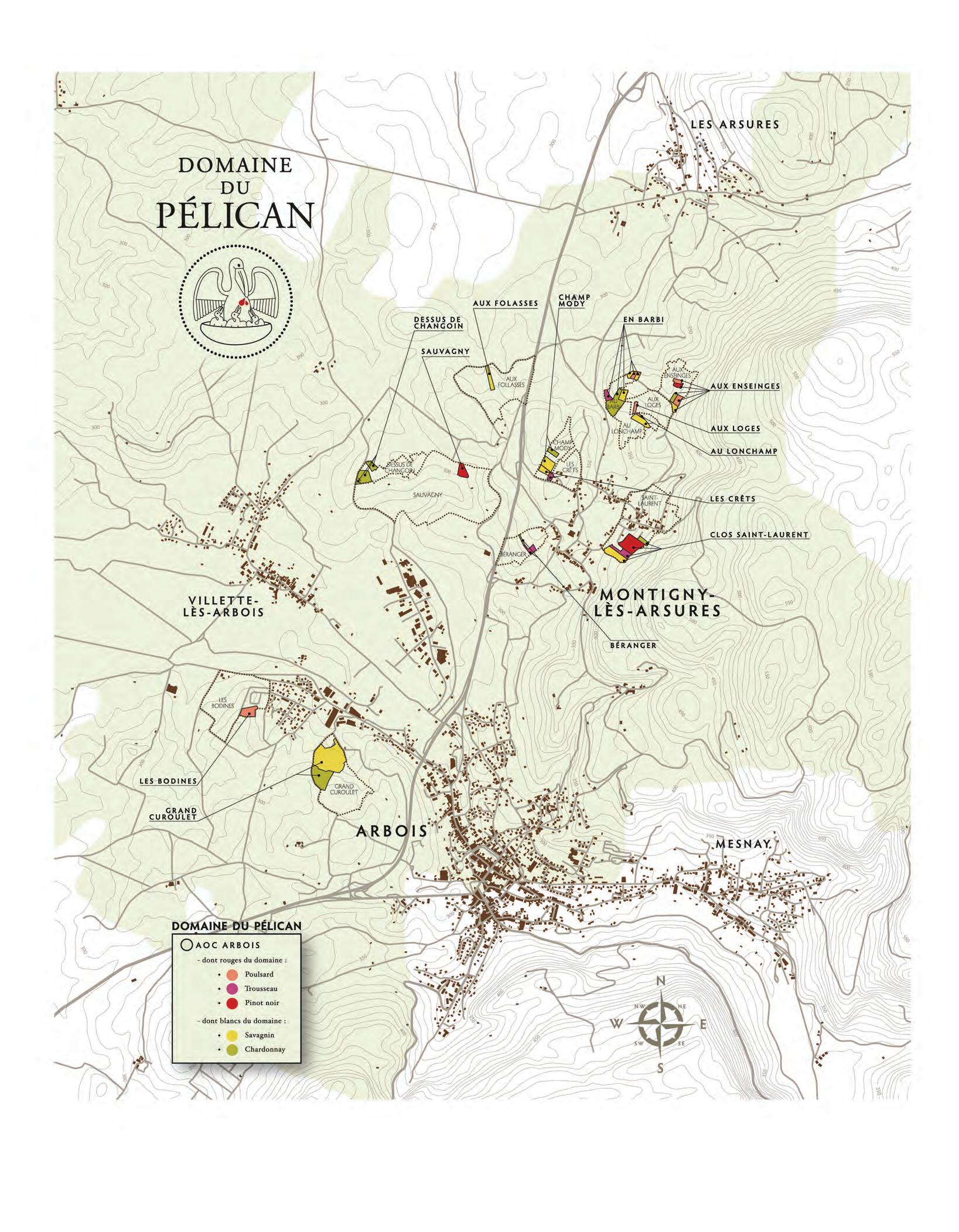

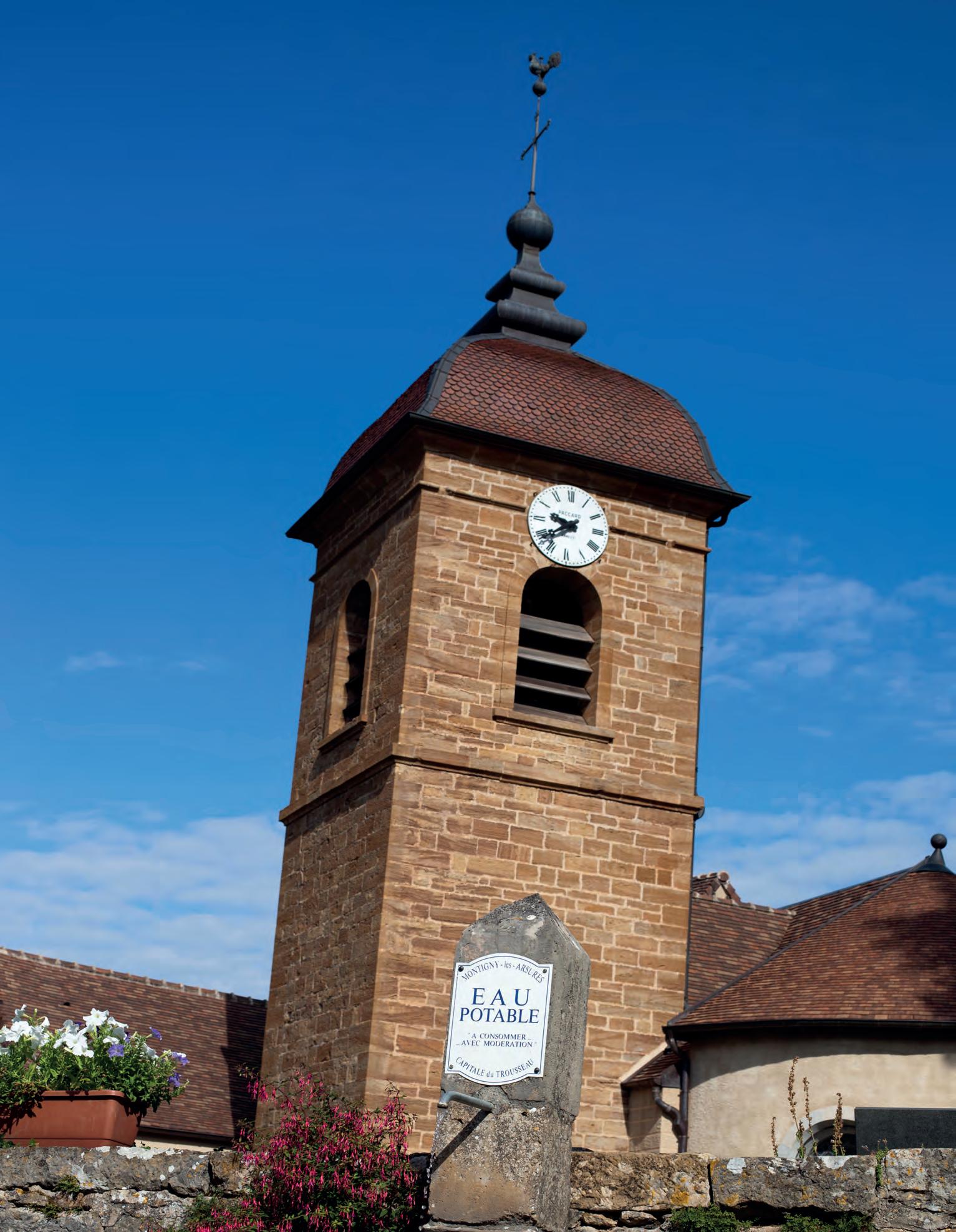

Jura sits between the Swiss border to the east and the Saône river to the west, beyond which lies the Côte d’Or.
Burgundian winemakers drive through Jura on their way to ski in the Alps but, until recently, its vinous richness was largely unknown outside the region.
There is certainly none of Burgundy’s newfound glitz here. The landscape feels quasi-Alpine and decidedly rural. Arbois is the region’s de facto wine capital.
Where Burgundy’s soils revolve around limestone, Jura is built on clay-rich marl, in various colours, from the Triassic and Early Jurassic geological epochs. Plantings have shrunk dramatically since the early 19th century but a renaissance is afoot.
There are five main grapes:
Savagnin, described by Guillaume d’Angerville as “THE great Jura grape”, the sole permitted variety for Vin Jaune
Chardonnay and Pinot Noir, which in Jura date back to the Middle Ages so should not be dismissed as Burgundian imports
Trousseau, planted in Arbois especially, which thrives in warmer sites
Poulsard, which tends to make light reds (and deep rosés)
In Jura, Savagnin is most commonly found in oxidative styles (sous voile). This can be as Vin Jaune, which requires 6.5 years in barrel under a ‘veil’ (voile) of film yeast, similar to fino sherry, or simply Savagnin sous voile, which requires 2-5 years in barrel under veil. Savagnin is a wine of acidity, texture and minerality, which can display wonderful aromatics or take on rich winemaking influences, as in the oxidative styles. See page 16 for more on these wines.
As an aside, a famous name in Jura history is Louis Pasteur, who lived in Arbois and carried out his research into fermentation and pasteurisation from his vineyard in Montigny-lès-Arsures, where Domaine du Pélican is located.
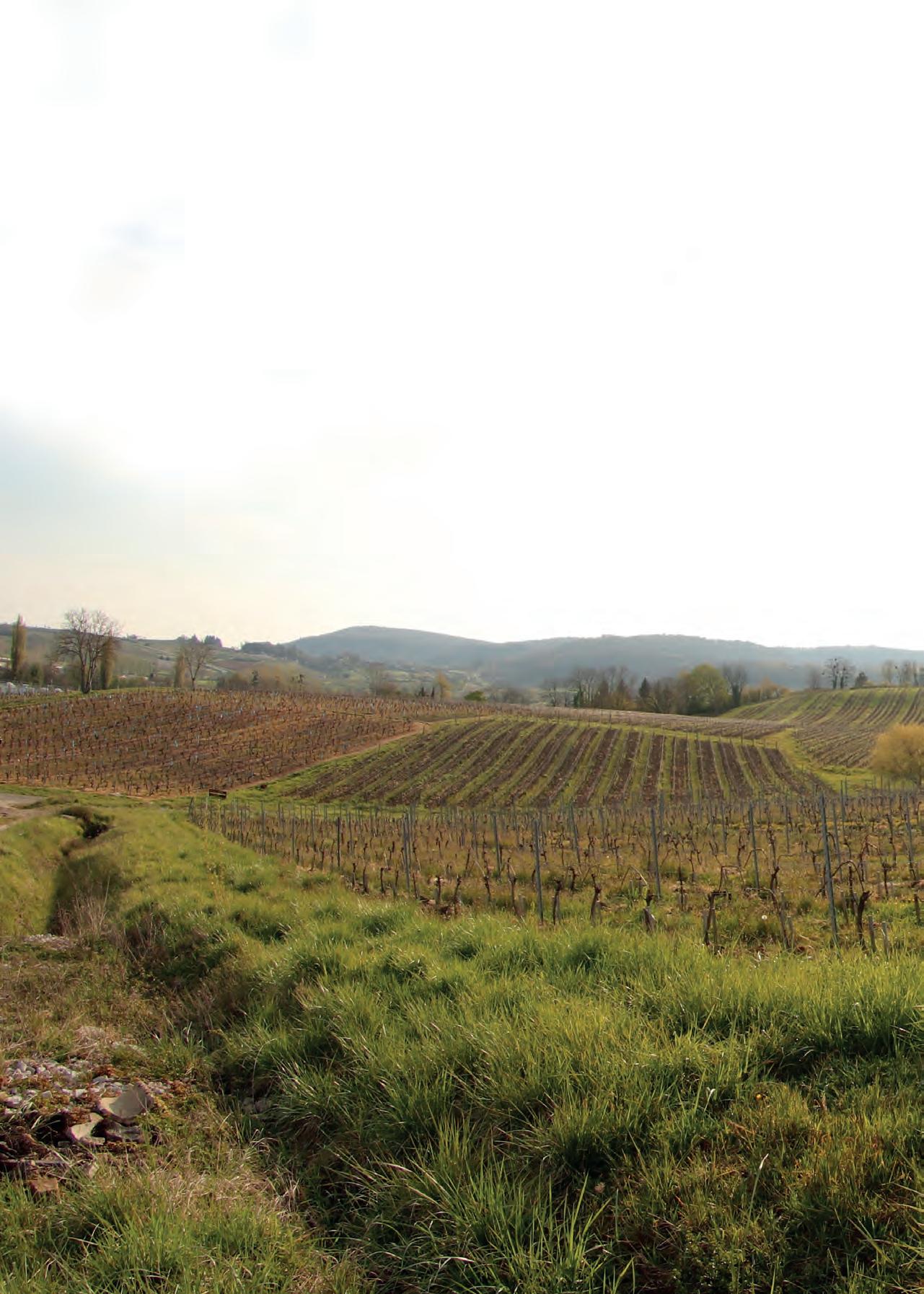
Domaine du Pélican is based in Montigny-lès-Arsures, near Arbois.
The domaine was established in 2012 by Guillaume d’Angerville, of Domaine Marquis d’Angerville in Volnay, and his longstanding Régisseur in Volnay, François Duvivier. The wines are vinified, barrelaged and bottle-aged at the estate. The holdings, as in Volnay, are close together, which is a blessing for biodynamic viticulture.
The 15 hectares are planted with two white varieties: Chardonnay and Savagnin, and three red varieties: Pinot Noir, Trousseau and Poulsard. The vineyards are in two main areas. In the hamlet of Montignylès-Arsures are the holdings bought from Château de Chavanes and Jacques Puffeney. The En Barbi vineyard is here. The second holding is in Arbois, in the lieu-dit Grand Curoulet, home to the eponymous single vineyard wines. There are a few rows of vines, called Le Clos, by the Château de Chavanes, where the new winery stands. The vines are between 10 and 40 years old, apart from three hectares in Grand Curoulet that were replanted in 2015.
Guillaume d’Angerville decided to make wines in Jura after a blind tasting experience in 2007, in a restaurant in Paris. The wine in question was a Chardonnay from Stéphane Tissot that he mistook for a Meursault.
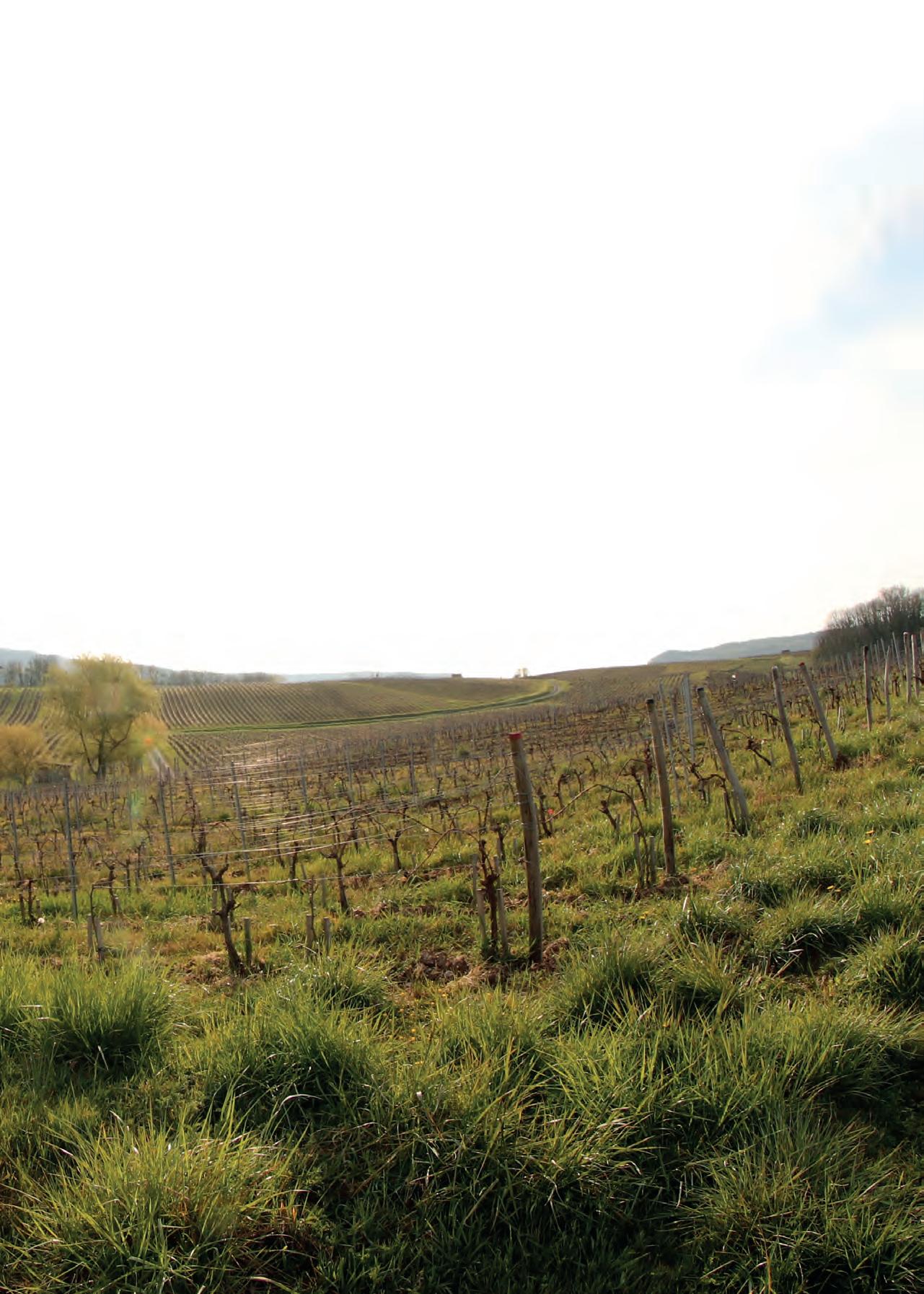
There followed a search lasting several years, with the help of soil specialist Yves Herody, for the right vineyards.
The new domaine’s first vines came from the Château de Chavanes estate. The vineyards of Jacques Puffeney were added in 2014. The Grand Curoulet plot was bought from Jean-Marc Brignot in 2012, but only came into production in the 2018 vintage. Grand Curoulet had been worked without pesticides by the former owner, a producer of natural wines. Having been neglected for several years, d’Angerville and Duvivier decided to replant it, using massal selection.
The pelican in the domaine’s name is a tribute to the symbol of the town of Arbois, which appears on the town’s crest. It commemorates a bird belonging to Marie de Bourgogne that, in the 15th century, did not survive a trip to the Jura. Fearful of potential repercussions for the perishing of this important lady’s pet, the town of Arbois adopted the pelican as its emblem. Although widely known, this legend had never been used by local winemakers, providing Guillaume and François with a fitting name for their new domaine.
A summary of the 2022 season, in Guillaume d’Angerville’s own words.
After a traumatic 2021 season and vintage, which combined frost (April) with hailstorms (June) and mildew pressure throughout, we were all hoping for a return to more benign weather conditions, as in 2020. We were heard by Mother Nature.
Late autumn and early winter 2021-2022 temperatures and rainfall were broadly in line with historical averages. In contrast, February was warm (3°C above the historical average), with many more sun hours than normal in February and March (+36 and +67 respectively). Budbreak was relatively early, at the end of March.
May was good for the vines: a combination of sun and rainfall aided rapid development, and flowering took place in the last week of the month. Disease pressure remained low throughout the season, with mildew never threatening to spread. Oidium was similarly quiet.
July was particularly warm and dry, with virtually no rainfall, after plenty in June. Around mid-July, the first heatwave delayed the vines’ development but véraison (when the grapes turn from green to red) happened nonetheless around that time. August was thankfully wetter, which helped the vines finish their maturation, but some yield was lost to the summer drought. August temperatures remained around 3°C above average.
Harvest started on 29th August, just five days later than in 2020, the domaine’s earliest start ever. We were delighted with the quality of the crop in 2022, which not surprisingly translated into beautiful wines: vibrant, fruity and well-balanced. The 2022s certainly represent one of the best vintages of our short existence.
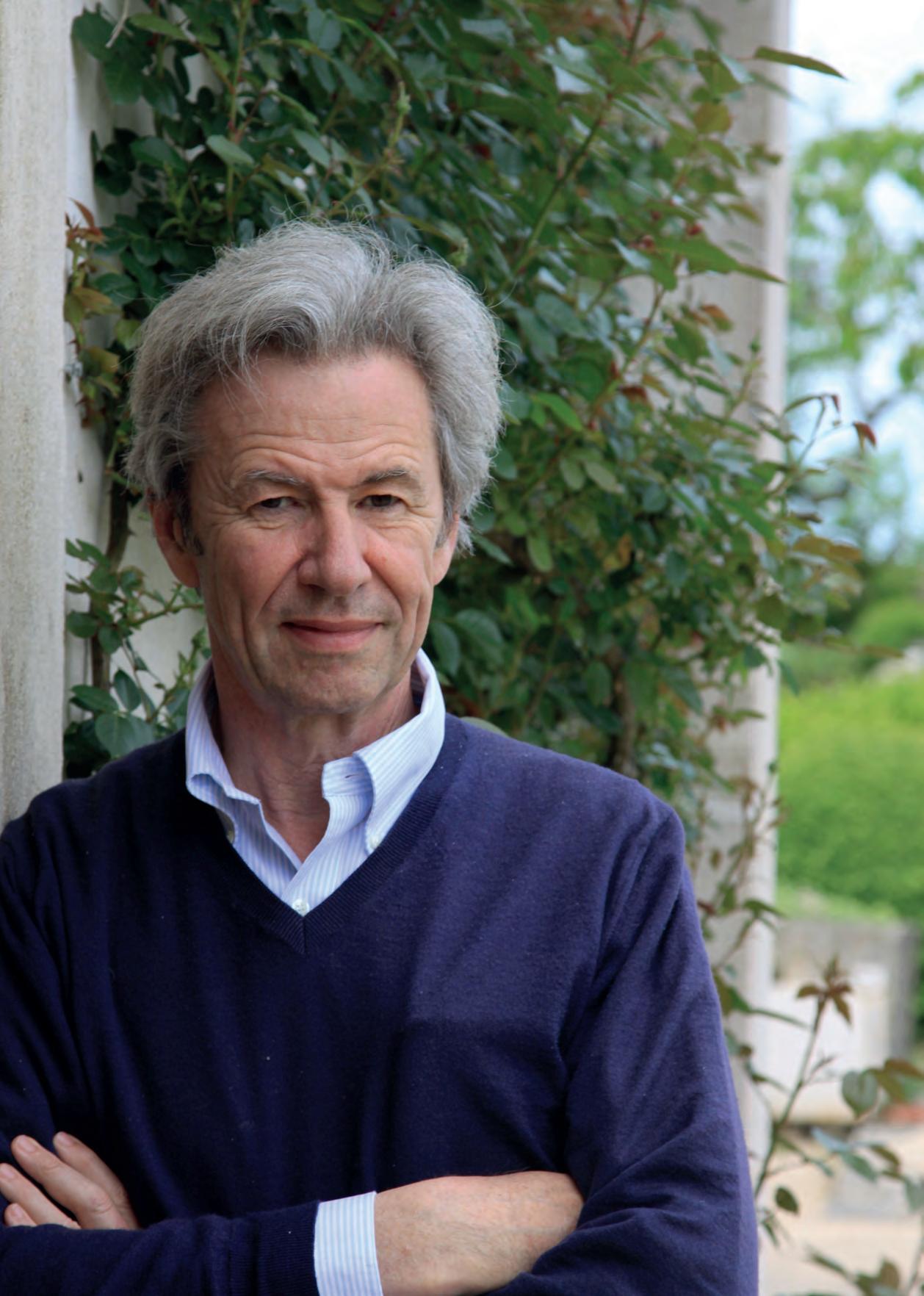
As in Volnay, Domaine du Pélican’s vineyards are managed biodynamically. There are eight permanent staff at the estate, to apply the plant-based treatments when needed and to work the soil and the vines. Biodynamics has proven exceptionally successful against drought (which causes hydric stress and vine shutdown). As a result, the vine roots dig deeper to find water, while reduced ploughing insulates and retains moisture in the soil.

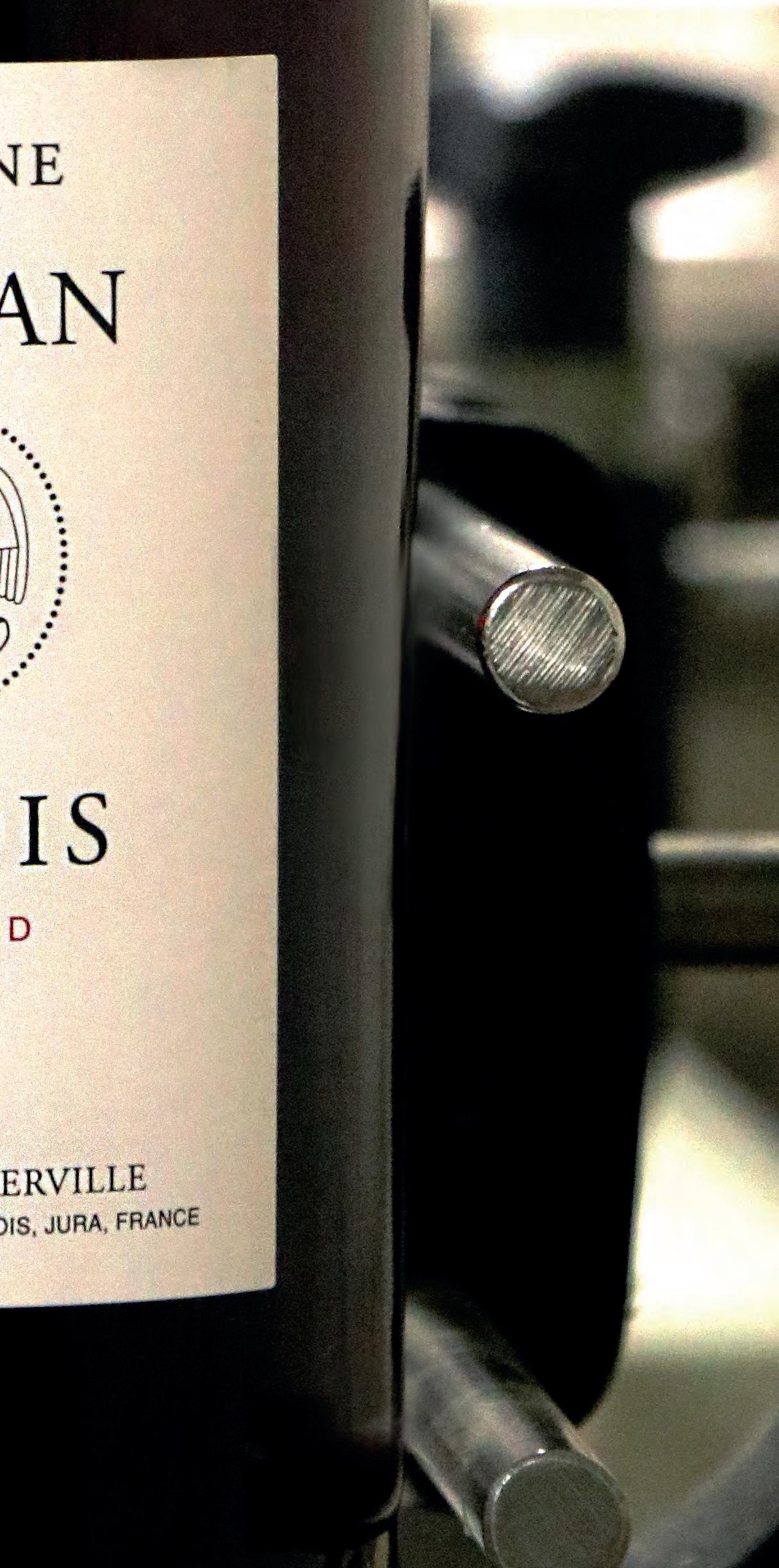
The domaine’s Poulsard was first produced in 2015, from vineyards acquired from Jacques Puffeney. The vines are located in Arbois and Montigny-lès-Arsures. They are between 25 and 60 years old and grow on marly soils with some sandy limestone. Pale ruby colour. Aromas of raspberry and orange zest, with orange blossom. The palate is fresh and vibrant – flavours of stem ginger and orange rind meet fine red berry fruit. This pairs well with either charcuterie or fish, according to Guillaume. Our tasting sample was cool, which worked well. A nice low 12% abv. Bottled in February 2024.
Corney & Barrow Score 17+
Recommended drinking from 2025-2031
£190/Case of 6 bottles, in bond UK
Formerly labelled Arbois Pinot Noir, this cuvée now bears the name of its vineyard, which is located directly behind the winery, at 340-380m of elevation. These are approximately 20-year-old vines. This was produced for the first time in 2018; Guillaume wanted to wait before making a Pinot Noir, cautious of the inevitable comparisons with Volnay. Crystalline red berry aromas. The palate is juicy and elegant, bright and with vibrant small red berry fruit, lifted by fresh acidity. No new oak. Guillaume reiterated, “You must refrain from comparing this to Volnay” – so I will! 45% was aged in barrels and the remainder in large foudres. Bottled in February 2024. 13.5% abv.
Corney & Barrow Score 17.5-18
Recommended drinking from 2025-2033+
£205/Case of 6 bottles, in bond UK
Made since the domaine’s inaugural vintage in 2012, the Trois Cépages is 60% Pinot Noir, 35% Trousseau and 5% Poulsard. These vineyards are all in the village of Montigny-lès-Arsures, on grey and black marl soils, partially covered with limestone scree. The vineyards are mainly west-facing, between 300 and 400 meters above sea level. The wines are aged in 350L and 500L barrels, of 6-10 years of age. Elegant red and dark berry aromas, the Pinot Noir visible in flavours of svelte raspberry. Bitter chocolate and crushed black pepper on the palate, framed by supple supporting tannins, where the Trousseau is felt. Bottled in February 2024, after 17 months in barrel. 13.5% abv.
Corney & Barrow Score 17.5
Recommended drinking from 2025-2033
£190/Case of 6 bottles, in bond UK
Béranger is an iconic plot of just 0.2 hectares, brought to prominence by Jacques Puffeney, the “Pope of Arbois”. It has been owned by Domaine du Pélican since the 2018 vintage. The soil is alluvium and silt on gray marl, stony enough to allow good drainage. The vines are over 50 years old, facing south and south-west. Guillaume poured this with an instruction: “Pay attention, this is Trousseau!” Montigny-lès-Arsures, where the domaine and this parcel are based, is considered to be the capital of Trousseau. Aromas of red berries, orange zest and orange blossom, leading into a palate of slaty, textural minerality that is tempting to compare to that of volcanic soils. Wonderful. I wouldn’t discourage drinking this early, but it will age gracefully too. Bottled in February 2024. 13.5% abv.
Corney & Barrow Score 18
Recommended drinking from 2026-2036+
£285/Case of 6 bottles, in bond UK
This wine has existed since the creation of Domaine du Pélican in 2012. It is a blend of several higher-elevation plots in Arbois and Montigny-lès-Arsures. The vines, aged between 15 and 45 years old, are mainly on hilltops, on marly soils. Mid-amber colour, with a bright, flinty nose of ripe peach and apricot. The palate’s fleshy stonefruit flavours are lifted by juicy acidity. Grapes are lightly crushed, followed by an immediate pressing. Fermented and aged in old oak, two thirds in barrel and one third in foudre. Bottled in August 2023. 13.5% abv.
Corney & Barrow Score 17+
Recommended drinking from 2024-2029
£185/Case of 6 bottles, in bond UK
£390/Case of 6 magnums, in bond UK
Guillaume describes Grand Curoulet as “one of the absolute best terroirs in Arbois”. The appellation’s earliest plantings were here. The multi-coloured marl soils are “every colour of the rainbow”. The domaine makes a Chardonnay and a Savagnin from this almost-fivehectare north-facing hillside plot, overlooking Arbois and the Saône plain. Purchased by the domaine in 2012, it had previously been owned by Robert Aviet, a pioneer in Arbois and the Jura. Almost everything was uprooted in 2013 and much-needed drainage work carried out, before replanting in 2015. The wine is a pale/mid-amber colour. Aromas of flinty orchard and stone fruit, with orange blossom. The palate is bright and zesty, the honeysuckle, apricot and orange rind flavours. A Chardonnay that speaks eloquently of its place. Bottled in February 2024. 13.5% abv.
Corney & Barrow Score 18
Recommended drinking from 2025-2029
£235/Case of 6 bottles, in bond UK
£490/Case of 6 magnums, in bond UK
Nothing to do with Margot Robbie, En Barbi is a sheltered, south-facing plot, surrounded by hills. This makes it a warmer, earlier maturing site. It was plucked from the previous cuvée in the 2016 vintage, for its mineral tension and more powerful character. 25-yearold vines grow on clay-loam soils with grey marl. In 2024, before our visit in May, this was hit by frost, the advanced state of development making for significant losses. The 2022 offers fabulous texture and what we agreed was a sense of gravitas, adding a resonance and persistence to the perfectly ripe peach fruit. Aged in a combination of Burgundy barrels and larger 350L and 500L formats. Bottled in August 2023. 12.5% abv.
Corney & Barrow Score 17.5+
Recommended drinking from 2025-2032
£250/Case of 6 bottles, in bond UK
£550/Case of 6 magnums, in bond UK
Ouillé means topped up. As Guillaume explained it, when you open the bung hole of the barrel, you can see your reflected eye (œil). In other words, this is an expression of the Savagnin grape without exposure to oxygen, in contrast to the more traditional oxidative Jura Savagnins. This is made from numerous plots in Arbois and Montigny-lès-Arsures. The diverse soils include three geological ages of marl. A pale lemon colour heralds a nose of pure stone-fruit with enticing lemon zest. The palate is joyful: pure and precise lemon and peach fruit to the fore, with zesty lift. A wine of tension and energetic drive. Or as Guillaume put it, “Every time I taste this, I want six oysters.” Aged half in 500L barrels, half in foudre Bottled in August 2023. 12.5% abv.
Corney & Barrow Score 17.5
Recommended drinking from 2026-2032
£185/Case of 6 bottles, in bond UK
As described in the Grand Curoulet Chardonnay note above, this esteemed vineyard (“one of the absolute best terroirs in Arbois”) was replanted in 2015. The vineyard blend is two thirds Savagnin to one third Chardonnay. The marl soils here are particularly complex. This is a terroir ideally suited to the late-ripening Savagnin grape which, in this north-facing, windy site, means these vines tend to be the latest-ripening of the domaine. Mid lemon-amber colour. Aromas of pastry and stone-fruit, with citrus zest and orange blossom. The palate is textural and bright, the yellow peach and crunchy pear fruit set off nicely against a bite of stony minerality. Lovely wine, delivering Jura personality whilst remaining entirely accessible. An allrounder. Bottled in February 2024. 12.5% abv.
Corney & Barrow Score 18
Recommended drinking from 2025-2033
£270/Case of 6 bottles, in bond UK
£560/Case of 6 magnums, in bond UK
This is a ‘skin contact’ dry white wine, meaning it is vinified as if it were a red wine, with fermentation of whole berries rather than just the juice. It was made for the first time in 2018 and repeated in 2019, 2020 and now 2022. Rich amber colour. Bright aromas of peach, apricot, orange zest, orange blossom, tangerine and honey. Savagnin is an aromatic variety (related to Traminer and hence Gewurztraminer), which is showcased wonderfully here. The palate opens with a juicy approachability, revealing a tactile shapeliness – almost chewable on the stonefruited mid-palate. This lends itself brilliantly to food, with enough weight to pair with a curry or rich sauce. Tannic grip on the back palate, with persistent perfume. Aged in foudres and bottled in August 2023. 12.5% abv.
Corney & Barrow Score 17.5+
Recommended drinking from 2025-2032
£215/Case of 6 bottles, in bond UK
The sole sparkling wine from the domaine is labelled Brut Sº (S Zero). Zero for zero dosage. 100% Savagnin, so not a Crémant de Jura, which is limited to 30% Savagnin and must contain either Chardonnay or Pinot Noir. As Guillaume said, he “wanted to bring something new to the world of Jura sparkling wines” and so “chose to use Savagnin, THE great Jura grape.” 2019 was the first vintage. Pale amber colour – a notch deeper than Champagne. Pure aromas of orchard fruit, orange rind and crystallised ginger. The palate is pure and bright, vinous and fruity, with leesy bite adding texture. Disgorged in February 2024, after 12 months of ageing and 17 months sur lattes (ageing in bottle pre-disgorgement). 13% abv.
Corney & Barrow Score 17
Recommended drinking from 2024 - 2027
£205/Case of 6 bottles, in bond UK
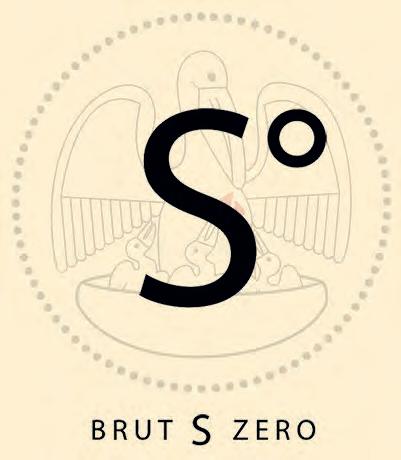
The following two wines are perhaps the most distinctively ‘Jura’, in that they are made with exposure to oxygen during the maturation process. The barrels here are not topped up and a layer of film yeast forms on the surface of the wine. It is similar to the development of flor in fino sherry, but the film is much thinner, meaning that the protection against oxygen is only partial. The wine therefore receives both oxidative and yeastderived influences.
Sous voile literally means ‘under veil’ – the veil being the film yeast under which this wine has developed. The nose here was described by Guillaume as “Vin Jaune 101 – if you don’t want to go all the way to Vin Jaune”. Despite that, my initial jotting reads “fino sherry on the nose”: the resemblance is undeniable and those who like that style will love this. The palate is zesty and fresh, with an airy lightness of touch and a certain honeysuckle playfulness. Vestiges of pretty orange and apricot fruit give way to fine yeastiness and oxidative macadamia nuttiness. This will not evolve in bottle, according to Guillaume – it will hold with no problem but what you see is what you get. 14% abv.
Corney & Barrow Score 17.5-18
Recommended drinking from 2024 - 2030
£285/Case of 6 bottles, in bond UK
25-30% of the wine is lost during élevage – the so-called angels’ share. This process is further encouraged by the region’s distinctive Vin Jaune cellars which, as in Jerez, are open to the elements. In the case of Domaine du Pélican’s cellar, an open window at one end and a lattice door at the other ensure constant air circulation.
Literally ‘yellow wine’, Vin Jaune is in a way the pinnacle of Arbois and Jura. It is made from the Savagnin grape, grown on marl soils. With a minimum of 6.5 years in barrel ‘under veil’ of yeast, it is one of the great oxidatively aged dry wines. This 2016 is a landmark release at Pelican – it is the domaine’s first vintage of Vin Jaune. Mid-amber colour (or should we just say ‘yellow’?) Intense yeasty aromas, with candied orange. The palate is pure and immediate, textured and intensely salty. This may be an acquired taste but for those who like fino sherry, it is a bullseye. The most traditional pairing is with a piece of Comté cheese. Wonderful – and, at 13.5% abv, so drinkable... Please note that the bottle volume here is 62cl, the traditional clavelin Vin Jaune format (pictured opposite).
Corney & Barrow Score 18
Recommended drinking from 2024 - 2030
£145/Case of 1 clavelin, in bond UK
£425/Case of 3 clavelins, in bond UK
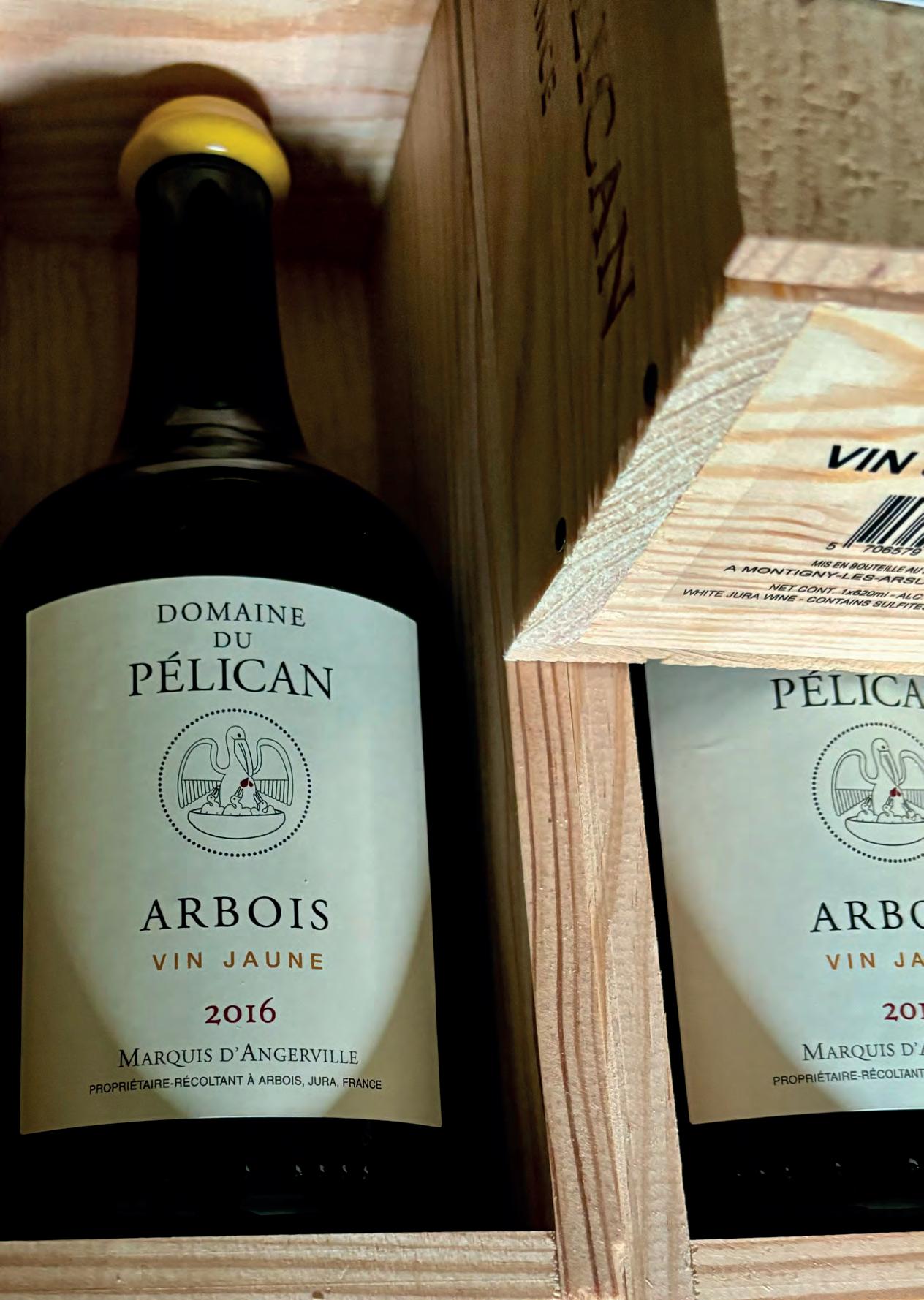
LONDON
1 Thomas More Street London E1W 1YZ
T +44 (0)20 7265 2400 sales@corneyandbarrow.com
LEEDS
4 Park Square East Leeds LS1 2NE
T +44 (0)1133 400 380 northofengland@corneyandbarrow.com
EDINBURGH
Oxenfoord Castle by Pathhead Midlothian, Scotland EH37 5UB
T +44 (0)1875 321 921 edinburgh@corneyandbarrow.com
HONG KONG
12/F Club Lusitano, 16 Ice House Street, Central, Hong Kong
T +852 3694 3333 hongkong@corneyandbarrow.com
NEWMARKET
Belvoir House, High Street
Newmarket, Suffolk CB8 8DH
T +44 (0)1638 600 000 newmarket@corneyandbarrow.com
AYR
8 Academy Street, Ayr Ayrshire, Scotland KA7 1HT
T +44 (0)1292 267 000 ayr@corneyandbarrow.com
SINGAPORE
70 Anson Road #07-01 Hub Synergy Point Singapore 079905 T +65 6221 8530 singapore@corneyandbarrow.com
www.corneyandbarrow.com